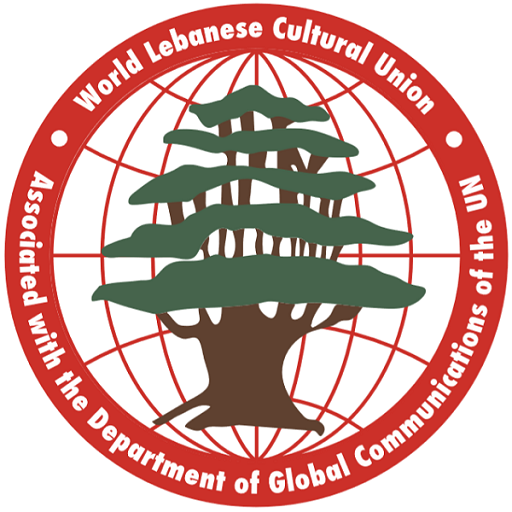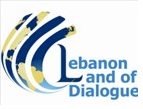12000 Turkish-Lebanese are part of the Lebanese Multicultural mosaic.
A slice of Turkey in North Lebanon.
By Brooke Anderson
The Turkmen town of Kaweishra claims to be the last where residents still speak Turkish. |
KAWEISHRA, Lebanon: The Turkish-language signs and red flags bearing white crescents and stars in this small mountainous village might make you think you’ve made a wrong turn. In fact, you’ve just entered the town of Kaweishra – Kavashra in Turkish – one of Lebanon’s few Turkmen villages. |
“We’re the last Turkmen village where everyone still speaks Turkish,” Kaweishra mayor Mustafa Khodar says, sitting at the local Turkish restaurant Yildizlar, one of several local businesses inspired by his ancestral homeland.
Down the road is a clothing store that sells goods imported from Turkey; many locals have special satellites for Turkish news and TV shows; a municipality building has a large Turkish flag painted on the outside; and a local center offers Turkish language lessons in preparation for university in Turkey, which awards scholarships to qualified high school graduates.
With a population of just 3,500, Kaweishra is so remote that until relatively recently, the Turkish government and even many Lebanese had no idea it existed. Local residents say this isolation allowed the language and culture to remain intact for generations.
Then, in 1989, right before the end of Lebanon’s Civil War, a Lebanese Army officer overheard one of his soldiers speak a few words in Turkish and, curious, decided to take him to the Turkish Embassy. Thus began the first contact between the Turkmen of Lebanon and their ancestral homeland.
It didn’t take long to discover – although no surprise to this area’s residents – that there were long-established Turkmen communities throughout the north and the Bekaa Valley. The Turkish Embassy estimates that Lebanon is home to between 12,000 and 13,000 Turkmen, in addition to several thousand Turkmen refugees from Syria, where their population is approximately 1.5 million.
“We consider them … a human bond between Turkey and Lebanon,” Turkish Ambassador to Lebanon Inan Ozyildiz said of the local Turkmen communities.
Turkey’s aid to Lebanon increased significantly with housing and infrastructure projects following the July 2006 war, totaling $55 million since then, though there have long been cultural ties because of the countries’ shared history.
“We want [the Turkmen] to be part of Lebanese society and to have better living conditions,” Ozyildiz told The Daily Star.
In 2010 the Turkish think tank ORSAM did a detailed survey of Lebanon’s Turkmen villages, and they were able to identify five different groups: Akkar Turkmen, including residents of Kaweishra; Baalbek Turkmen; Cretan Turks, who left the island after it fell to Greece at the end of the 19th century; Syrian Turkmen in Beirut, who mainly migrated to Lebanon in the 1940s for economic reasons; and the Circassians, who resettled in the Levant after the Ottoman-Russian War in the late 1870s. While it is known they came in different waves of migration, it is unclear when the first Turkish immigrants arrived in Lebanon.
Some historians believe the first Turkmen now living in Lebanon and Syria were brought to the Levant with Sultan Selim I’s army during his campaign to Egypt, settling in the conquered areas beginning with Aleppo (in northern Syria), with the new villages serving as logistics stations. Other research puts their arrival even earlier than the 1500s, dating back to the 12th century when the Mamluks dominated Mount Lebanon.
Since the chance encounter with Kaweishra soldier, the Turkish government has worked to bolster Turkish identity in Lebanon. In the past, the Foreign Ministry had dispatched Turkish-language teachers to the village, though it sent no one this year due to the deteriorating security and threats against Turks and Turkish interests.
Despite their relative isolation, many Turkmen villages in Syria and Lebanon enjoy long-standing ties, and five Turkmen families have resettled in Kaweishra since the start of the Syrian conflict.
When the violence in her village of Zara across the border became unbearable, Hikmat Qassem says she knew she and her family would be safe in Kaweishra. The family of nine – including her four children, three younger sisters and husband, a doctor who works at a local clinic – moved into a spacious apartment here five months ago.
Qassem says they are grateful for the opportunities offered in Kaweishra, particularly the scholarships by the Turkish government, which she and her sisters hope to take advantage of to study medicine Turkey. At the moment, the scholarship program does not include Syrian refugees in Lebanon, but Ozyildiz says the government is making serious efforts to accommodate them this coming academic year.
But despite the warm welcome they have received, Qassem and her family are nostalgic for their home village in Syria. Qassem shows a reporter pictures of Zara on her phone – beige villas nestled in green mountains – and speaks enthusiastically of the distinctive Turkish-style carpet weaving still practiced in the city.
She also shares a poem written by her husband about their village: “O Zara, it was in your love that I was raised and found my way. I distanced myself from your love and left my heart behind with you …”
Down the street her neighbor Ahmad Khodar, a native of Kaweishra, a retired soldier, is glad for his village’s ties with Turkey, where his daughter is now studying medicine on a scholarship from the Turkish government. He has traveled several times to Istanbul, where he had no problem communicating, but notes that the Turks speak more quickly.
He says more young people in the village have started learning Turkish as they see the opportunities that it brings.
But Mayor Khodar says Kaweishra needs to raise the standard of living if it is to remain a bastion of Turkmen culture in Lebanon. Despite the many opportunities in Turkey for those who receive scholarships, most natives of Kaweishra choose to return to their ancestoral village, but find few employment opportunities here.
The majority of residents work in the public sector, followed by agriculture or as small merchants. The nearest hospital is 8 kilometers away in Qobeiyat, and the village’s small annual budget of around $80,000 leaves few options for residents to work on municipal projects. The village only receives around 10 hours of electricity per day, barely enough to support the small projects their budget can afford.
The result of the community’s high education and low opportunities, the mayor said, is a “marriage crisis,” wherein educated women who want to stay in the village end up staying at their parents’ home because there are no suitable men their own age.
“We have 30 girls in the village with university degrees who are sitting at home,” Khodar says.
Despite the village’s poverty, he is heartened to see that there has been no significant decline in the population over the years and that so many people from Kaweishra do end up staying – even if it sometimes means having to commute far distances for work. It is perhaps this close-knit community and the cultural pride it fosters that keeps so many of the people of Kaweishra close to home for now.
Brooke Anderson(Daily star)



